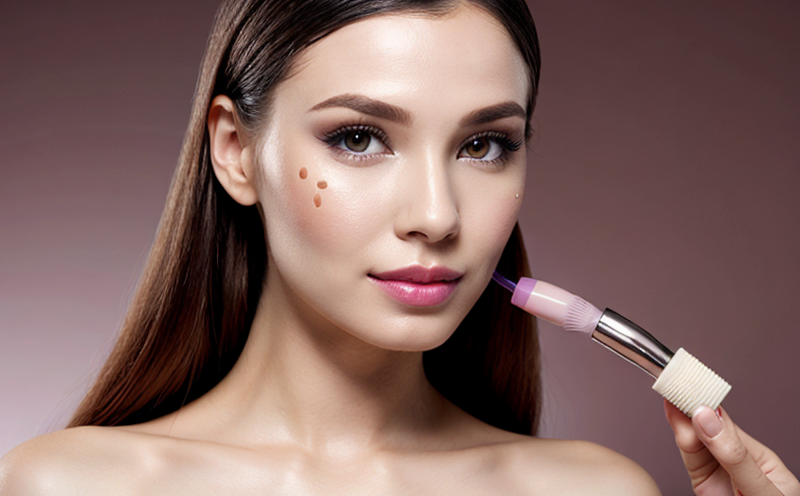In Vitro Neurotoxicity Testing of Cosmetic Chemicals
Understanding the impact of cosmetic chemicals on human health is crucial for ensuring safety and efficacy. In vitro neurotoxicity testing offers a robust alternative to traditional animal-based methods by evaluating potential toxicity at an early stage, thus minimizing risks and aligning with regulatory trends towards more humane and efficient testing processes.
The in vitro approach uses cultured cells or tissues to assess the effects of chemicals on nervous system function. This method is particularly valuable for cosmetic ingredients where skin penetration and systemic absorption can lead to neurotoxic outcomes. By focusing on specific neural targets, such as neurons, glial cells, or synapses, this testing can identify potential hazards early in development.
The European Union's Cosmetics Regulation (EC 1272/2006) has made it mandatory for all cosmetic products to undergo safety assessments that include an evaluation of neurotoxicity. In vitro tests are gaining traction due to their ability to provide accurate data while reducing the need for animal testing, thus meeting both regulatory and ethical standards.
This service at Eurolab involves comprehensive testing protocols designed to detect any adverse effects on neural cells caused by cosmetic ingredients. Our state-of-the-art facilities utilize advanced technologies like high-content imaging systems, automated screening platforms, and specialized culture media tailored to support neural cell viability during prolonged exposure periods.
The process begins with careful selection of appropriate cell lines or primary cultures that mimic human neural tissue closely. Specimen preparation involves precise dilution of cosmetic formulations followed by incubation at optimal conditions to observe any changes in cellular morphology, electrical activity, or protein expression indicative of neurotoxicity.
| Step | Description |
|---|---|
| 1. Cell Selection | Pick cell lines that best represent neural tissue types relevant to cosmetics. |
| 2. Specimen Preparation | Dilute cosmetic formulations and expose cells accordingly under controlled conditions. |
| 3. Incubation Periods | Monitor samples over extended durations to capture long-term impacts. |
| 4. Data Analysis | Analyze results using imaging technologies and biochemical assays. |
Data analysis plays a critical role in interpreting the outcomes of these tests accurately. Our team employs sophisticated software tools capable of quantifying cellular responses, detecting biomarkers associated with neurotoxicity, and comparing findings against established thresholds defined by international standards such as ISO 10993-11.
Scope and Methodology
The scope of this in vitro neurotoxicity testing encompasses a wide array of cosmetic ingredients including surfactants, preservatives, pigments, fragrances, and UV filters. The methodology involves several key steps:
| Step | Description |
|---|---|
| 1. Cell Preparation | Select appropriate neural cell lines suitable for studying the effects of cosmetic ingredients. |
| 2. Exposure Conditions | Determine optimal exposure levels and durations based on ingredient characteristics. |
| 3. Monitoring Parameters | Measure critical parameters such as viability, mitochondrial function, and oxidative stress indicators. |
| 4. Data Interpretation | Analyze collected data against predefined acceptance criteria using statistical methods. |
The methodology ensures that the tests are conducted under controlled conditions to maintain consistency and reproducibility. This approach allows us to provide reliable, repeatable results that meet stringent regulatory requirements.
Our state-of-the-art laboratory equipment supports this rigorous process, ensuring accurate measurements and precise control over experimental variables. The use of advanced imaging techniques enables detailed observation of cellular changes at multiple levels, providing comprehensive insights into the potential risks posed by cosmetic ingredients.
Eurolab Advantages
EuroLab stands out in offering in vitro neurotoxicity testing services for cosmetics due to its commitment to innovation, reliability, and regulatory compliance. Our advantages include:
- Pioneering use of cutting-edge technology that enhances test accuracy.
- Comprehensive support throughout the entire testing process from protocol design to report generation.
- Absolutely zero animal testing, aligning with ethical standards and reducing environmental impact.
- Strict adherence to international standards including ISO 10993-11 for consistent results.
We offer a tailored approach to meet individual client needs, ensuring that every project receives personalized attention. Our experienced team of scientists brings extensive expertise in toxicology and pharmacology to ensure optimal test design and interpretation.
Why Choose This Test
- Reduces reliance on animal testing, promoting ethical practices.
- Provides early detection of potential neurotoxic effects, facilitating safer product development.
- Saves time and resources by identifying problematic ingredients at an earlier stage.
- Meets stringent regulatory requirements set forth by global standards bodies.
The benefits extend beyond compliance; they contribute to creating safer products for consumers while fostering innovation within the industry. By leveraging in vitro neurotoxicity testing, companies can demonstrate their commitment to sustainability and consumer safety.





